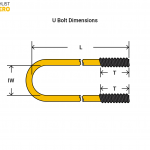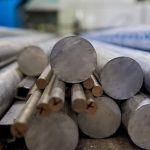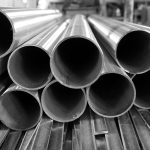Manganese steel, also called Hadfield steel or mangalloy, is an alloy of the element manganese (Mn) and carbon steel. It provides high impact strength and abrasion resistance. In this article, you’ll learn about manganese steel’s history, properties, applications, and alternatives.
History of Manganese Steel
Sir Robert Hadfield, a British metallurgist, developed what is now know as manganese steel in 1882. Hatfield’s work found that manganese steels obtained high levels of toughness when manganese levels were above 10% and heat-treated via quenching. Today this alloy typically contains between 12-14% manganese.
Properties of Manganese Steel
Manganese steel is non-magnetic and provides strong resistance to wear and abrasion. The alloy also provides high impact strength, high tensile strength, and good yield strength. It provides up to three times greater surface hardness than conventional steel alloys without an increase in brittleness. Heat treat processes further increase the alloy’s strength if desired. Manganese steel is considered to have zero machinability and cannot soften by annealing.
It hardens rapidly during cutting and grinding operations and, as such, requires special tooling to the machine. Drilling requires extreme difficulty and the use of a diamond or carbide drill tip. It may be cut with an oxy-acetylene torch, but plasma or laser cutting is preferred. The material may accept welding but requires low heat application and careful cooling.
| Atomic number | 25 |
| Atomic weight | 54.938 |
| Melting point | 2,275°F (1,246°C) |
| Boiling point | 3,744°F (2,062°C) |
| Density | 0.00720168953-0.00743142443 ounces/ft 3 (7.21–7.44 gram/cm3) at 68°F (20°C) |
Applications
Applications include crushing dies, trackpads for heavy machinery, and demanding mining applications. Other items made from manganese steel include armor plates, safes, railway switches, burglar bars, cement mixers, and hammermill crushers. It is non-magnetic, making it ideal for use in electrical transformers and for lifting magnets.
While all steels rust, an increase of manganese positively affects its corrosion resistance.
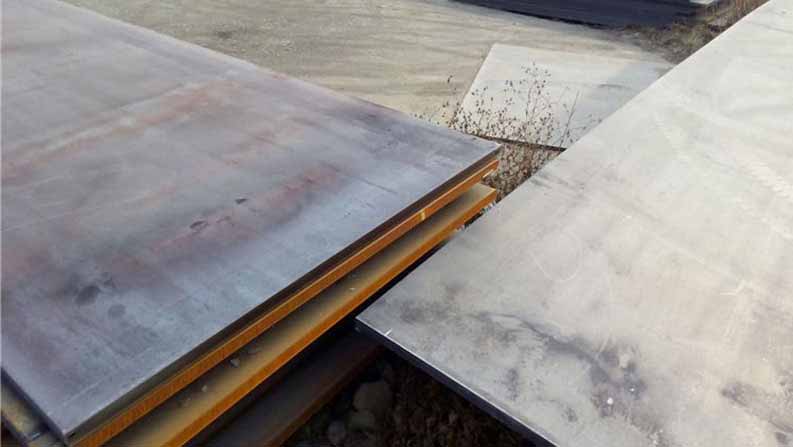
Alternatives
Frequently, practical requirements such as machining and cutting requirements usually outweigh manganese’s additional strength and toughness benefits.
Manganese Steel vs. Carbon Steel
Properties
Manganese steel is more complex and more brittle than carbon steel. Manganese occurs in several significant deposits. The most considerable ores include manganese dioxide in the form of hydrated barium manganese oxide, pyrolusite, and wad.
On the other hand, carbon steels are usually relatively soft and have low strength. They have high flexibility, making them excellent for machining, welding, and low cost.
It has the highest hardness and toughness of the carbon steels and the lowest ductility. High-carbon steels are very wear-resistant because they almost always harden and tempered.
Effect
Manganese assists in deoxidation, prevents the formation of iron sulfide and inclusions, and promotes greater strength by increasing toughness.
On the other hand, carbon added to brittleness, yield point, tensile strength, and rusting are all affected by increased carbon concentration. Increasing carbon also reduces weldability.
Manganese steels usually contain at least 0.30% manganese, while low-carbon variants consists of less than 0.30% carbon, medium-carbon steel consist of 0.30% to 0.60% carbon, and high-carbon steel contains more than 0.60% carbon.
Manganese Steel vs. Stainless Steel
Stainless steel compares favorably to manganese steel as it pertains to corrosion resistance and toughness. However, stainless does not provide strength properties.
While stainless is known for being a tough machine to cut, shape, and form, the zero machinability of manganese makes it significantly tougher to work with. Drilling requires a diamond or carbide tip and even then, requires a large amount of torque to penetrate the metal.
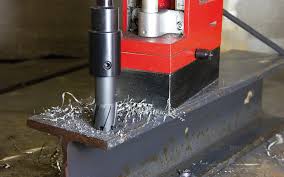
Stainless steels and heat-resistant steels are ferrous alloys with a minimum of 12% chromium content. When exposed to the outside atmosphere, stainless steel containing 12 percent chromium will resist corrosion or “rusting.” The chromium concentration can increase by up to 27% to produce a better level of corrosion resistance for more demanding applications.
Other elements, such as nickel, molybdenum, titanium, niobium, manganese, and others, can be added to stainless steel to improve its corrosion resistance and mechanical qualities.
